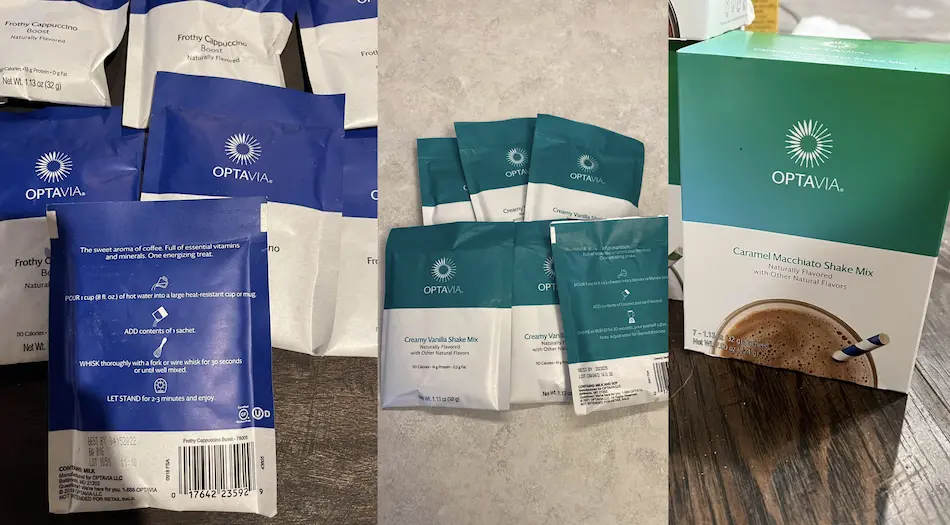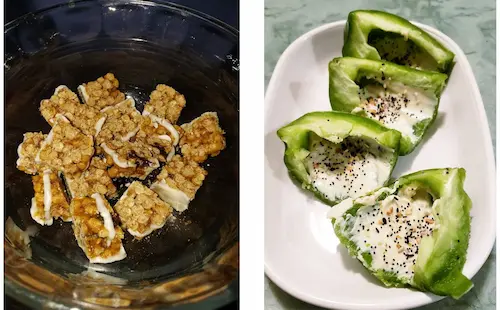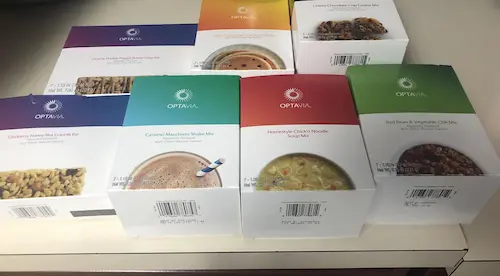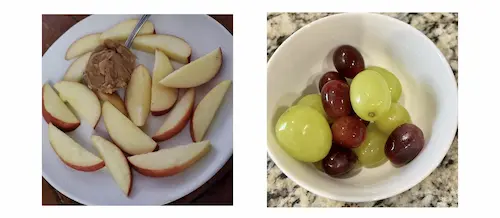Do you ever find yourself confused about the differences between Optavia snacks and Fuelings? Don’t worry, you’re not alone.
There are a few key differences between Optavia snacks and Fuelings that will help you decide if it’s okay to eat a snack as Fueling, or to use a fueling as a snack in between meals.

Are Optavia snacks considered a Fueling?
When I started my Optavia journey I thought I could choose snacks instead of Fuelings.
I thought I will be able to save money and get even better results.
Big mistake.
Optavia snacks are not considered as Fuelings becasue they have fewer calories, proteins, and carbs.
(It’s actually inaccurate to say that Optavia snacks are Fuelings.)
While Optavia defines Fuelings as little snack foods or meal replacement foods, they are not the same as snacks.
Optavia snacks vs Fuelings
And as much as Optavia snacks cost three times less than fuelings, there are many reasons why this is not a good idea.
1. Snacks should not replace fuelings
Although Optavia sells a limited number of snacks via their website, they should not be used as Fuelings.
Their snacks don’t provide enough nutritional value and calories compared to Fuelings.
For example, each serving of Optavia snacks has only 1 gram of protein (1).
On the contrary, each Optavia Fuelings have 10-15 grams of protein (2), depending on the type.
So, if I would use snacks as Fuelings, I would only have 5 grams of protein per day (plus whatever comes from your Lean and Green meals).
That is not enough.
The Centers for Disease Control and Prevention (CDC) recommends that 10-35% of your daily calories come from protein.
“That means that adult women need about 46 grams of protein per day, while adult men need 56 grams,” states the CDC.
2. Optavia fuelings are more nutritious
Both fuelings and snacks are portion-controlled pre-packaged small meals.
Most of them are nutritionally equal, made with the same mix of carbohydrates, protein, and fat.
However, Optavia fuelings are typically more nutritious than Optavia snacks.
Optavia snacks
- Calories: 50
- Total fat: 3 grams
- Total carbs: 6 grams
- Fiber: 1 gram
- Proteins: 1 gram
Optavia fuelings
- Calories: 100
- Total fat: 3 grams
- Total carbs: 13 grams
- Fiber: 4 grams
- Proteins: 11 grams
3. Snacks are smaller
The easiest way you can differentiate Optavia snacks from fuelings is by their calorie count and size.
Fuelings are higher in calories with around 100 per serving.
They also weigh 32 grams per serving, three times more than Optavia snacks.
Optavia has only 4 snacks available:
- Optavia Puffed Ranch Snacks
- Optavia Puffed Sweet and Salty Snacks
- Optavia Olive Oil and Sea Salt Popcorn
- Optavia Sharp Cheddar and Sour Cream Popcorn
Each of these snacks has 70 calories and 12 grams per serving.
Unlike Optavia fuelings, the snacks are in the form of munches or nibbles, not in the form of bars or shakes.
4. Fuelings are eaten at specific times of the day
According to the article review published in the Advances in Nutrition Journal, “the term ‘snack’ does not have one clear meaning. It is not always easy to tell if it is an extra meal or something else.”
Some people say that a snack is something you eat at a certain time of day, or it could be the type of food you eat.
Others might say that a snack is how much food you eat, or where you eat it.
If you’re following an organized eating schedule, you should be eating Optavia fuelings at specific times of the day.
For me, eating at regular intervals throughout the day was the key to achieving better results and combating food cravings during the day while keeping my body in a fat-burning state.
On the other hand, snacks can be eaten at any time.
5. Snacks are usually less filling than fuelings
Another reason why you should not use Optavia snacks to replace fuelings is becasue they are less satisfying.
Fuelings are higher in calories and higher in nutrient content than snacks, resulting in lower food cravings.
On the other hand, if you only eat snacks as fuelings, you may not reach the feelings of fullness due to the smaller portion size.
What snacks are equivalent to Optavia?
If you’re looking for a satisfying, yet a still healthy option that will fill you up without overindulging, try choosing homemade Optavia snacks.
These are higher-volume foods that contain lower amounts of calories; such as fruits and vegetables.
While Optavia fuelings and snacks have a unified size, homemade snacks come in all shapes and sizes.
Homemade snacks are more filling
Higher-volume foods help to combat food cravings better.
Here’s the photo of the chopped Optavia Raisin Oat Cinnamon Crisp Bar side by side with sweet pepper.

The Optavia Cinnamon Crisp Bar has 110 calories (3).
Four pieces of sweet pepper and cream cheese have less than 50 calories, despite being almost three times bigger than the bar.
Among the two, I feel more satisfied by eating homemade snacks.
This doesn’t mean you can enjoy snacks more frequently.
According to Optavia, you can have one optional snack each day, in addition to fuelings and Lean and Green meals.
Homemade snacks have different macros
Here’s the photo of the Optavia fuelings I received.

In this picture, you see shakes, bars, and hearty meals – all have almost the same nutritional value, yet completely different shapes and forms.
Each of the fuelings has an almost identical amount of proteins, carbs, and fats.
Contrary to the unity of macros in Optavia fuelings and snacks, homemade snacks don’t have a specific macronutrient ratio.
(I often use one or two food groups as a snack, which always vary in nutrients.)
Here’s the photo of my two favorite pre-workout homemade snacks – grapes and apple slices.

Each of these snacks has vastly different macronutrients.
You can control what you eat
The reason why I decided to make homemade snacks was becasue I started doing the Optavia diet on my own where I control what I eat.
I was able to create and design my own guilt-free 50-calorie snacks from the scratch.
Instead of eating the same food, I was in control of how many proteins, carbs, and fats I wanted in each snack.
Instead of relying on Optavia snacks and fuelings macronutrients and ingredients, I could choose foods that are high in proteins, more satisfying, and didn’t have to rely on processed foods.
